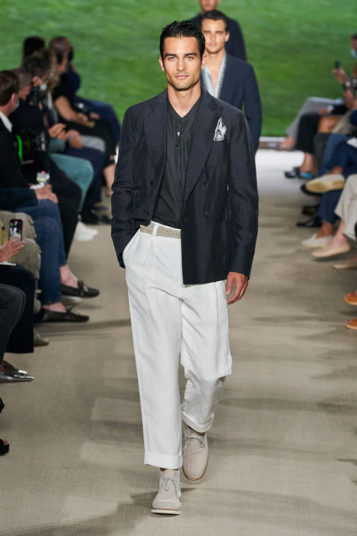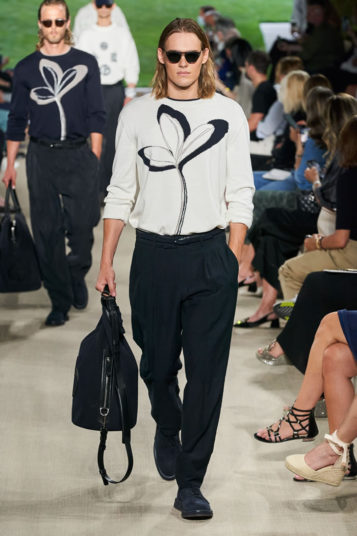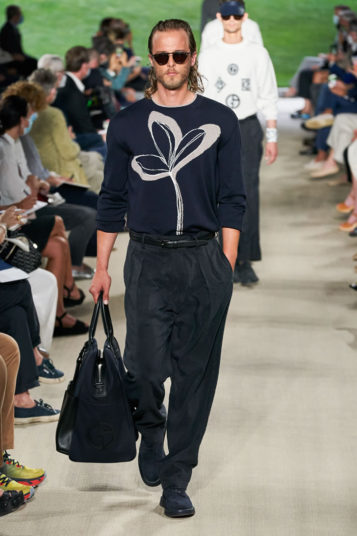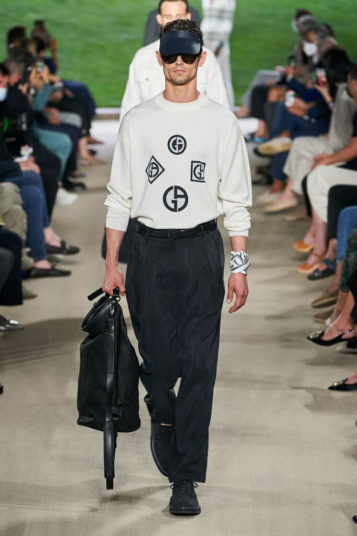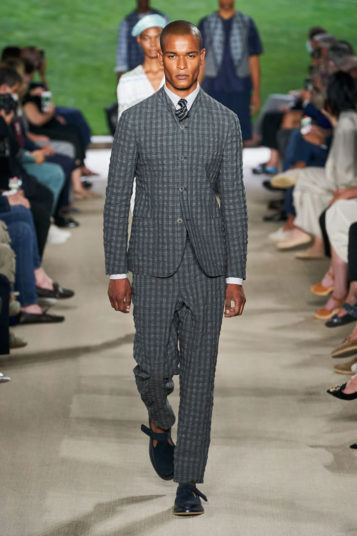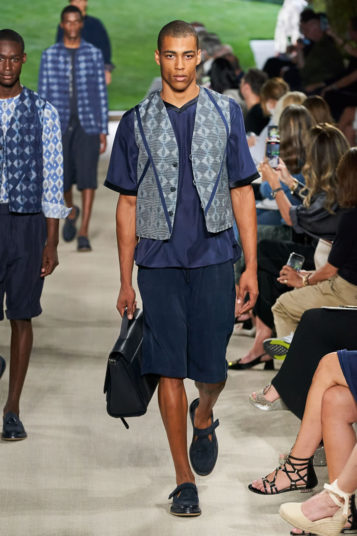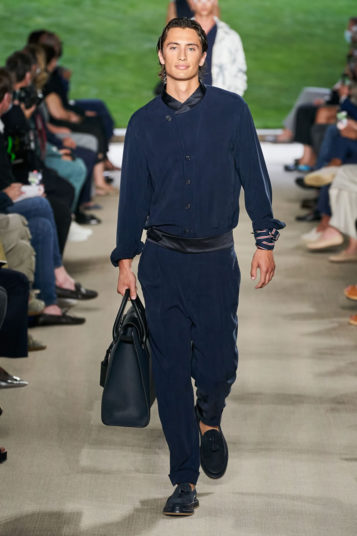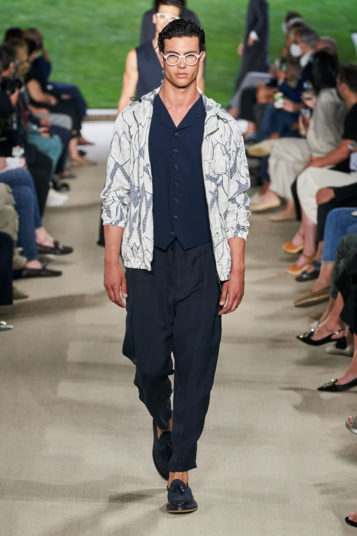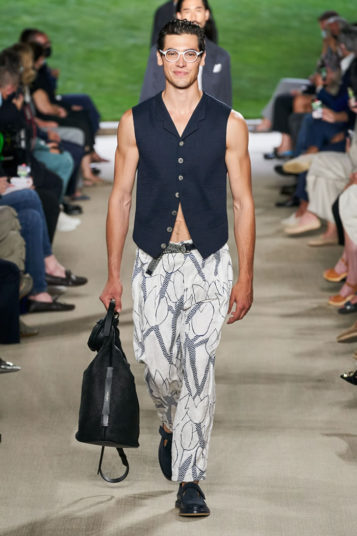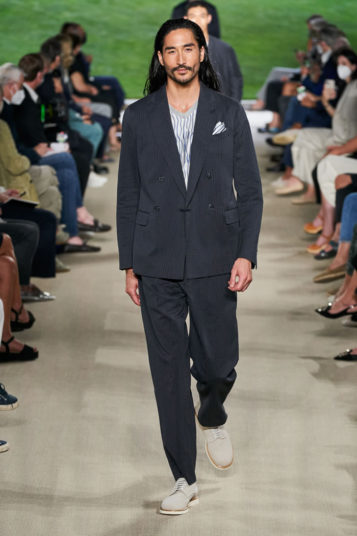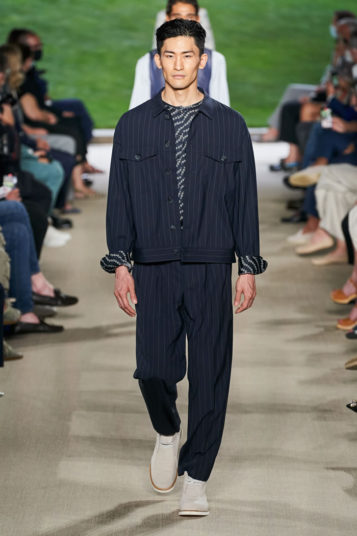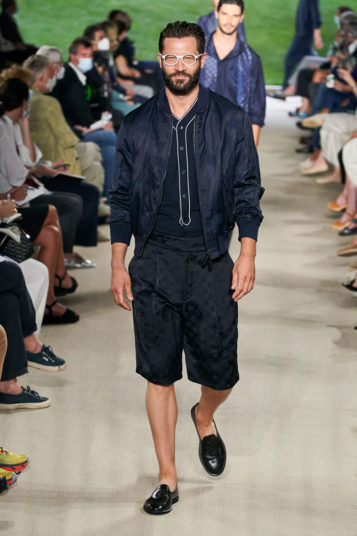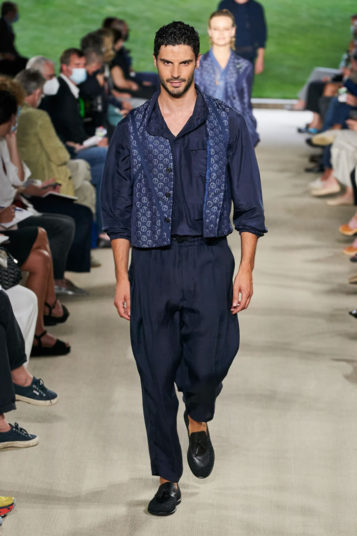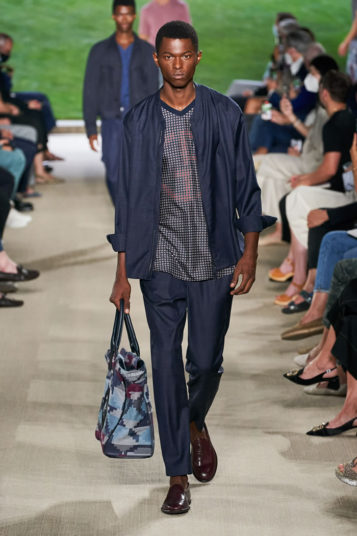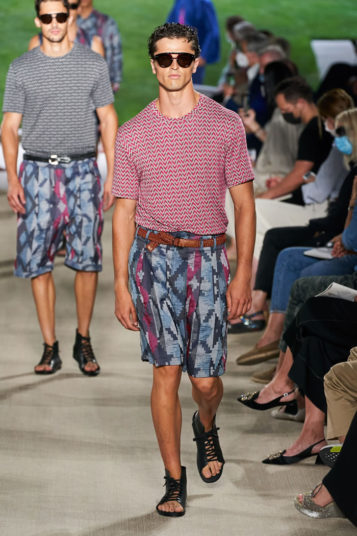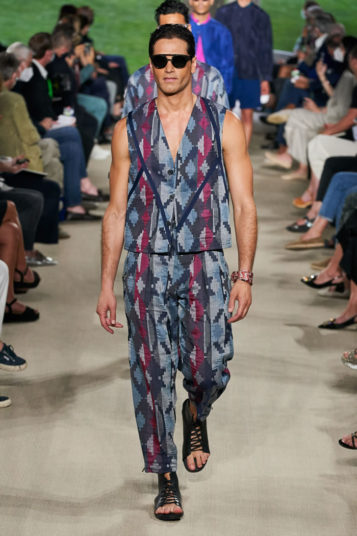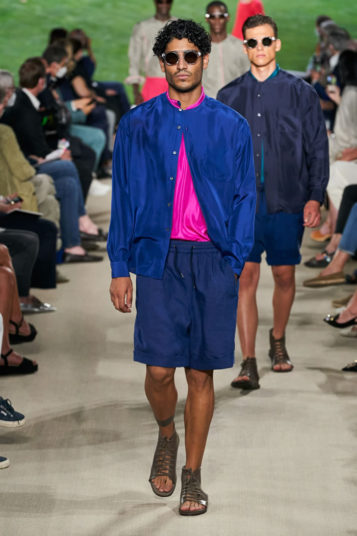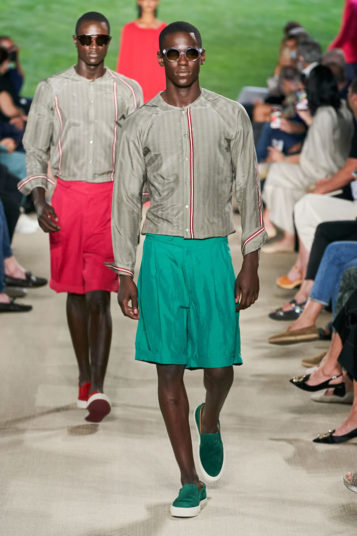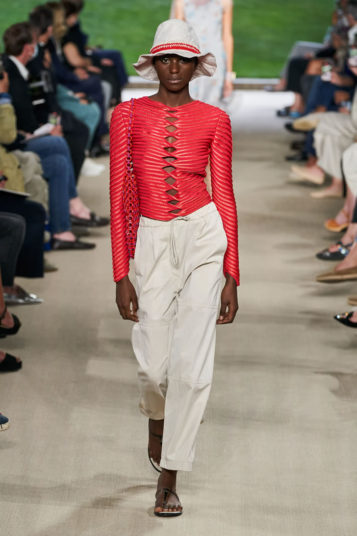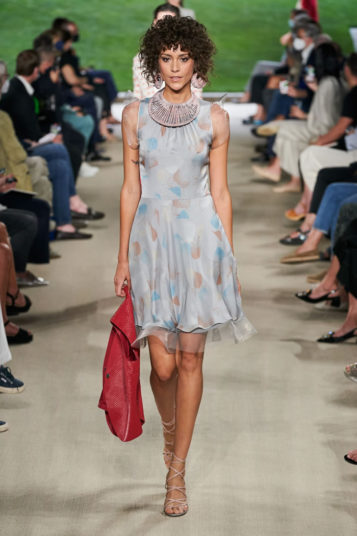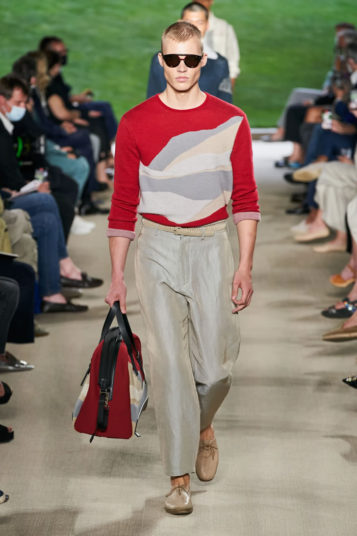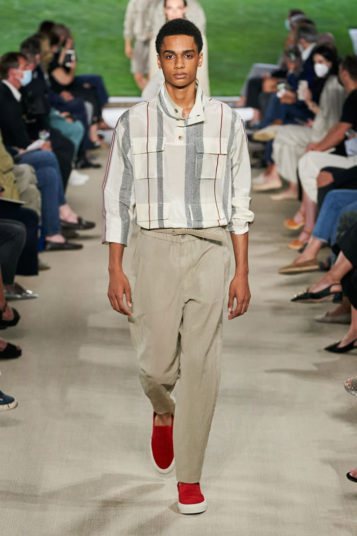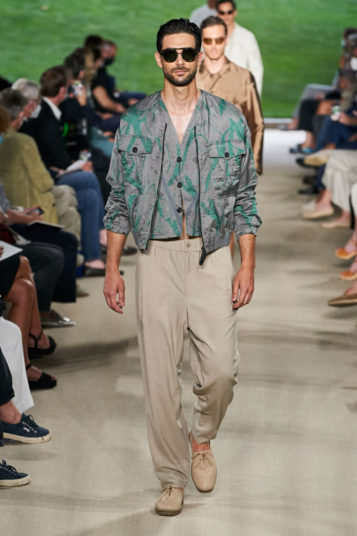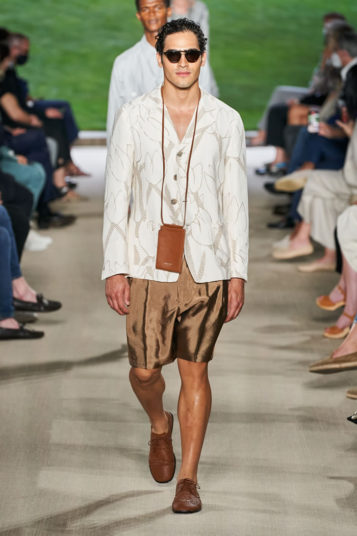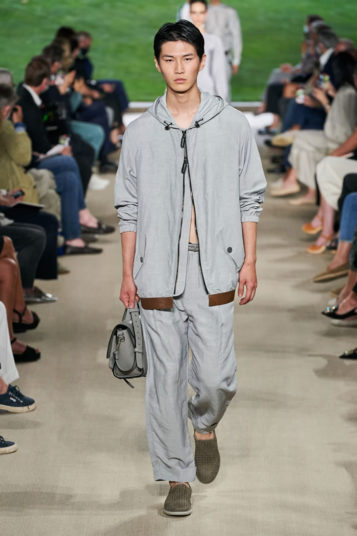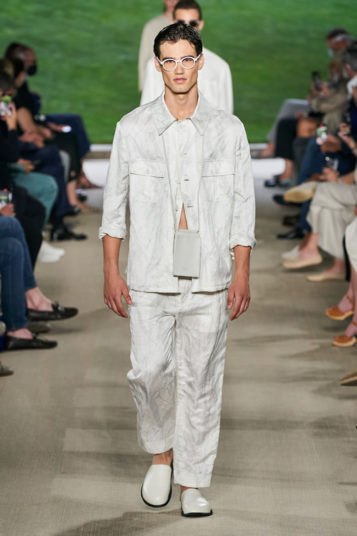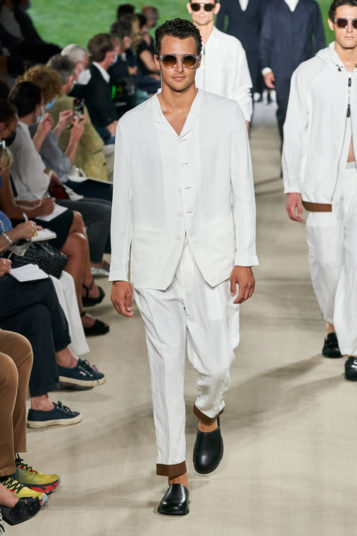Those were significant words for a self-declared control freak, and the impulse we’ve seen from Armani over the last year has been a great color on him. This collection was no exception.
Rather than going back to where he left off—the monolithic HQ Teatro that seats 800—he invited just 80 people to where it all began: his own home (and former headquarters) on Via Borgonuovo 21, where some of his most legendary shows took place.
You know it was important to him because he had put up with set builders and sound rehearsals intruding on his domestic idyll for two weeks leading up to it. Back in the day, Armani would host shows in the palazzo’s underground runway room, an early blueprint for the Teatro with 300 seats and an adjacent one-lane swimming pool for morning laps.
In the courtyard’s Japanese garden, steps away from Silvio Pasotti’s mural of a shirtless Armani immortalized alongside his 20th-century contemporaries (Yves Saint Laurent, Karl Lagerfeld, Liza Minelli), he showcased what his distilled mindset means for the Armani wardrobe: subtle, supple, sophisticated, and a little bit sexy.
Presenting the collection on a model cast that felt more directional than usual, he deconstructed his formal silhouette and loosened sharp lines with a sense of what ‘sportswear’ looked like before the mid-century. Maybe that’s what formalwear looks like in the 21st?
The sensibility was casual without crossing into the territory of laziness. “The overall attitude is very light because I think we have all learned to be informal and more relaxed in the way we dress,” Armani explained. He took a stance against the conventional suit, offering new generations—as well as old—an updated dress code to live by:
“Reimagined, so it is no longer composed of a blazer and a pair of trousers.” Now, Armani believes that a ‘suit’ can just as well be a shirt and a trouser in matching fabric, or a generational blouson-and-trouser combo.
Or: linen jackets like the Armani-gray ones he recently made for the Italian soccer team, inspired by the wardrobe of the legendary trainer Erzo Bearzot.
Wicked tongues in the Italian press said the jacket made the players look like chefs, which only goes to show that even Armani—a pillar of sartorial accuracy—is over traditional dress codes. “I do not like it when people are worn by clothes instead of wearing them. This has become even more important in the current situation,” he argued.
“In a way, the pandemic has proved that my intuition of a timeless and effortless style has always been a valuable one. And this is exactly what I would like to convey with this collection: an idea of comfort that is more in sync with the times that we are living.”
While wardrobe revolutions are perhaps more relative on Armani’s runway—the men’s mini-skorts proposed elsewhere this week were replaced by somewhat roomier shorts here—the pandemic’s impact on the designer is palpable.
Even if he continues to debunk suggestions he might be selling his company, like last week’s rumor that Armani was merging with Ferrari. “To continue with the driving metaphor, I’m still the one at the driving seat.
I have built all this in over 40 years of my career, and I have made specific and detailed plans for the future. So, there is no need for people to stress out,” wrote the designer.
In another departure from the procedure, he took his bow hand-in-hand with his first assistant, Leo Dell’Orco. Armani, by the way, does not drive a Ferrari.
For while he may be in the metaphoric driving seat, he added, “I must confess my little indulgence: I have a chauffeur, and I prefer to be driven around than drive the car myself.”
COLLECTION

